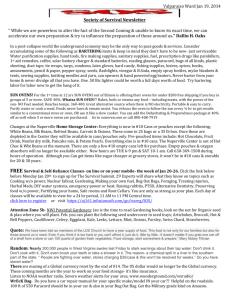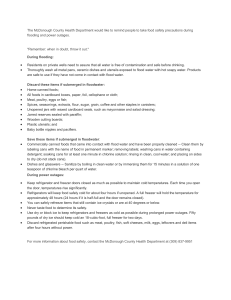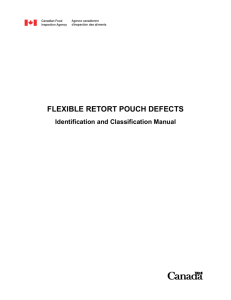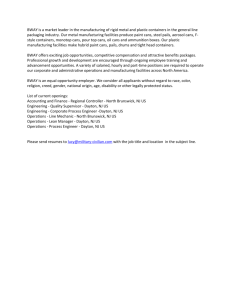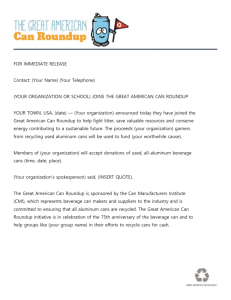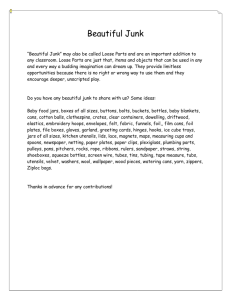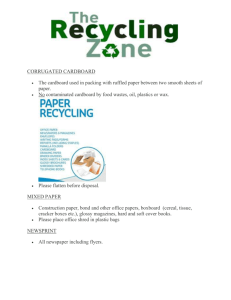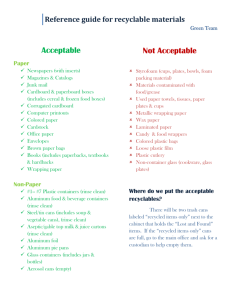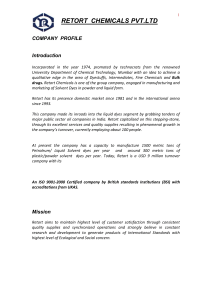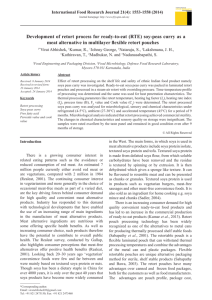food safety after floods_April 2012
advertisement
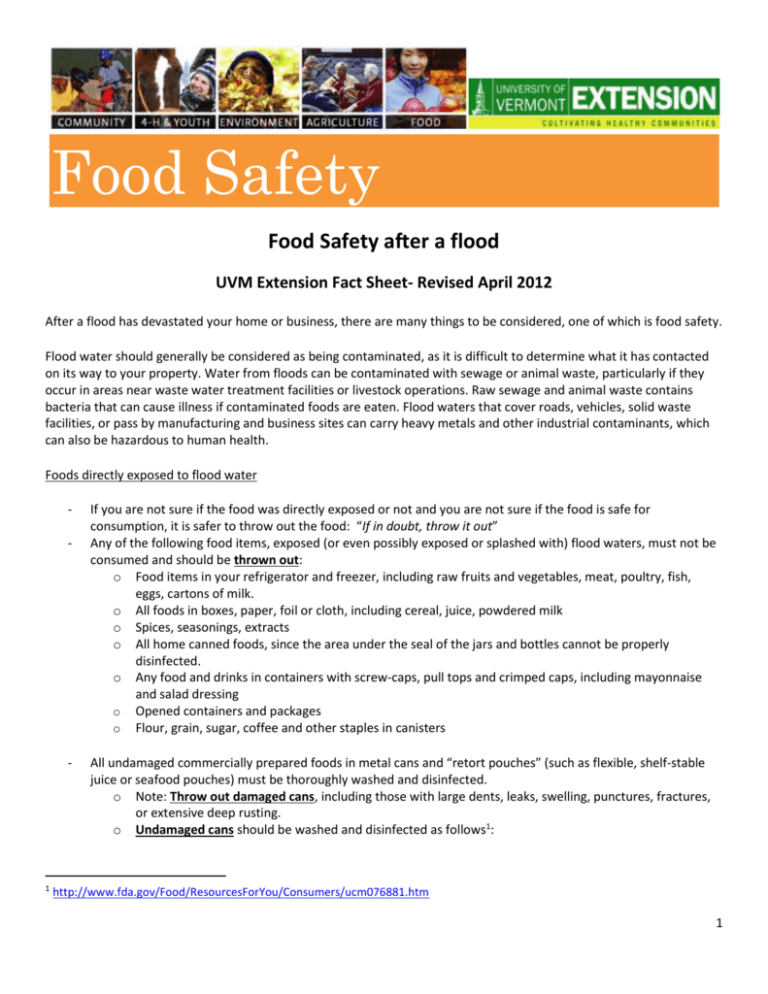
Food Safety Food Safety after a flood UVM Extension Fact Sheet- Revised April 2012 After a flood has devastated your home or business, there are many things to be considered, one of which is food safety. Flood water should generally be considered as being contaminated, as it is difficult to determine what it has contacted on its way to your property. Water from floods can be contaminated with sewage or animal waste, particularly if they occur in areas near waste water treatment facilities or livestock operations. Raw sewage and animal waste contains bacteria that can cause illness if contaminated foods are eaten. Flood waters that cover roads, vehicles, solid waste facilities, or pass by manufacturing and business sites can carry heavy metals and other industrial contaminants, which can also be hazardous to human health. Foods directly exposed to flood water - - 1 If you are not sure if the food was directly exposed or not and you are not sure if the food is safe for consumption, it is safer to throw out the food: “If in doubt, throw it out” Any of the following food items, exposed (or even possibly exposed or splashed with) flood waters, must not be consumed and should be thrown out: o Food items in your refrigerator and freezer, including raw fruits and vegetables, meat, poultry, fish, eggs, cartons of milk. o All foods in boxes, paper, foil or cloth, including cereal, juice, powdered milk o Spices, seasonings, extracts o All home canned foods, since the area under the seal of the jars and bottles cannot be properly disinfected. o Any food and drinks in containers with screw-caps, pull tops and crimped caps, including mayonnaise and salad dressing o Opened containers and packages o Flour, grain, sugar, coffee and other staples in canisters All undamaged commercially prepared foods in metal cans and “retort pouches” (such as flexible, shelf-stable juice or seafood pouches) must be thoroughly washed and disinfected. o Note: Throw out damaged cans, including those with large dents, leaks, swelling, punctures, fractures, or extensive deep rusting. o Undamaged cans should be washed and disinfected as follows1: http://www.fda.gov/Food/ResourcesForYou/Consumers/ucm076881.htm 1 o Remove the labels, if they are the removable kind, since they can harbor dirt and bacteria. Brush or wipe away any dirt or silt. Thoroughly wash the cans or retort pouches with soap and water, using hot water if it is available. Rinse the cans or retort pouches with water that is safe for drinking, if available, since dirt or residual soap will reduce the effectiveness of chlorine sanitation. Sanitize cans and retort pouches by immersion in one of the two following ways: 1. Place in water and allow the water to come to a boil and continue boiling for 2 min., or 2. Place in a freshly-made solution consisting of 1 tablespoon of unscented liquid chlorine bleach per gallon of drinking water (or the cleanest, clearest water available) for 15 minutes. Air dry cans or retort pouches for a minimum of 1 hour before opening or storing. If the labels were removable, then re-label your cans or retort pouches, including the expiration date (if available), with a marking pen. Food in reconditioned cans or retort pouches should be used as soon as possible thereafter. Any concentrated baby formula in reconditioned, all-metal containers must be diluted with clean, drinking water. Cooking utensils, pans, and kitchen countertops exposed to flood water - - Thoroughly wash metal pans, ceramic dishes, and utensils (including can openers) with soap and water, using hot water if available. Rinse, and then sanitize them by boiling in clean water or immersing them for 15 minutes in a solution of 1 tablespoon of unscented, liquid chlorine bleach per gallon of drinking water (or the cleanest, clearest water available). Discard wooden and plastic utensils, baby nipples, pacifiers and any other porous nonfood items that are used with food. Thoroughly wash countertops with soap and water, using hot water if available. Rinse, and then sanitize by applying a solution of 1 tablespoon of unscented, liquid chlorine bleach per gallon of drinking water (or the cleanest, clearest water available). Allow to air dry. Other useful resources: - - Safely Using Produce from Flooded Gardens (University of Wisconsin Extension): www.foodsafety.wisc.edu/assets/factsheets/Safely%20Using%20Produce%20from%20Flooded%20Gardens.pdf Keeping Food Safe During an Emergency (United States Department of Agriculture) www.fsis.usda.gov/Fact_Sheets/keeping_food_Safe_during_an_emergency/index.asp UVM Extension helps individuals and communities put research-based knowledge to work. Fact sheet prepared by Dr. Londa Nwadike, UVM Extension Food Safety Specialist, londa.nwadike@uvm.edu; tel: 802-223-2389; 617 Comstock Road, Berlin, VT 05602 Issued in furtherance of Cooperative Extension work, Acts of May 8 and June 30, 1914, in cooperation with the United States Department of Agriculture. University of Vermont Extension, Burlington, Vermont. University of Vermont Extension, and U.S. Department of Agriculture, cooperating, offer education and employment to everyone without regard to race, color, national origin, gender, religion, age, disability, political beliefs, sexual orientation, and marital or familial status. 2
